[2025 Updated] How to Fix AirPlay Icon Not Showing on MacBook
Have you ever used AirPlay to mirror your screen on your MacBook? Sometimes, you may encounter a situation where the AirPlay icon not showing on MacBook. Don’t worry, this article will explain the reasons for the Mac AirPlay icon missing and how to solve this issue. Please read it carefully.
[2025 Updated] How to Fix AirPlay Icon Not Showing on MacBook
Give a try on AirPlay alternative – AnyMiro
- Fast response time within 10 ms and 60fps frame rate.
- A stunning visual experience with no color difference.
- Lag-free screen mirroring and 4k resolution.
Available for both Win & Mac
AirPlay is a feature that almost every Apple user uses in their daily life. It’s commonly used to wirelessly transmit content from an iPhone, iPad, or MacBook to AirPlay-supported TVs, speakers, or other devices. However, one user noticed that the AirPlay icon not showing on MacBook while attempting to screen the mirror to an Apple TV.
For iOS users, AirPlay is an incredibly convenient function, and the disappearance of the AirPlay icon can create inconvenience when it comes to sharing music, videos, or screen mirroring. This article will explain the reasons why the AirPlay icon not showing on Mac and provide solutions. Keep reading to find out more.
Table of ContentsHide
Mac AirPlay Icon Missing? Why This Happen?
How to Fix AirPlay Icon Not Showing on MacBook
How to Fix AirPlay Icon Not Showing on iPhone/iPad
Pros and Cons of Using AirPlay as a Screen Mirroring Tool
Best AirPlay Alternative: Screen Mirror iPhone/Android to Mac with AnyMiroRecommend
FAQs About AirPlay on Mac
Mac AirPlay Icon Missing? Why This Happen?
In general, AirPlay icon not showing on MacBook is not due to a change in the icon itself, as it consistently appears in the Control Center. Here are some common reasons for the AirPlay icon not showing on a Mac that you should be aware of:
- The AirPlay-enabled device is not available in close proximity to the mirroring device.
- The AirPlay icon option might not be enabled in the Display Preferences.
- Unstable Wi-Fi connection between the Mac and the AirPlay device.
- The AirPlay device might be turned off, in sleep mode, or experiencing technical issues.
- Older versions of macOS might have compatibility issues with AirPlay.
- Security software or firewall settings might be blocking AirPlay connections.
All of the above are potential reasons for the disappearance of the AirPlay icon on your Mac. To address the issue of Mac AirPlay icon missing, you can read the methods outlined in the second part to try and resolve it.
How to Fix AirPlay Icon Not Showing on MacBook
The AirPlay icon not showing on MacBook can indeed be frustrating, but there’s no need to worry. Here, we present several effective methods to address the problem of the Mac AirPlay icon missing. Feel free to try them one by one.
1. Check Network Connection
AirPlay exclusively functions over Wi-Fi networks, not cellular ones, necessitating a Wi-Fi connection. To activate Wi-Fi on your Mac, navigate to System Preferences > Network and opt for Enabling Wi-Fi.
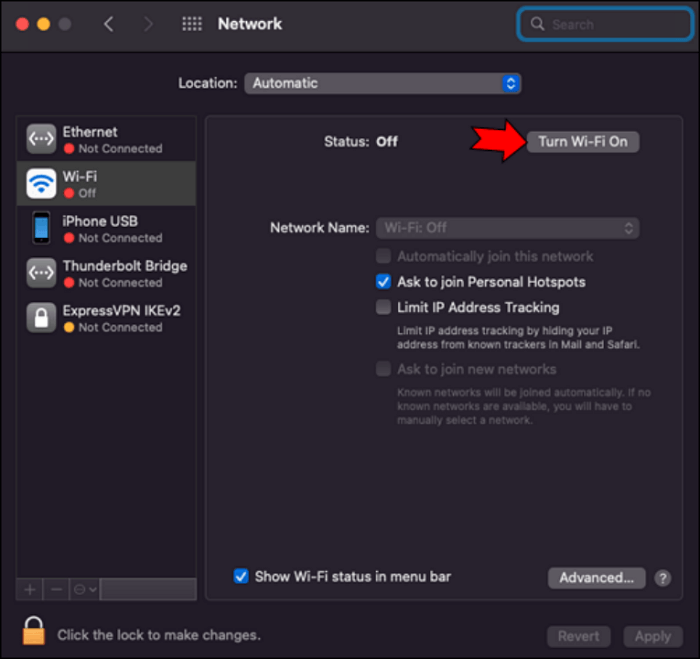
Check Network Connection of Mac AirPlay Icon Missing
2. Update macOS
Make sure your MacBook is running the latest version of macOS, as outdated software could lead to compatibility issues.
Step 1. Click on the Apple icon at the top-left corner.
Step 2. From the menu, choose “System Preferences,” then select “Software Update.”
Step 3. Click on “Update Now.”
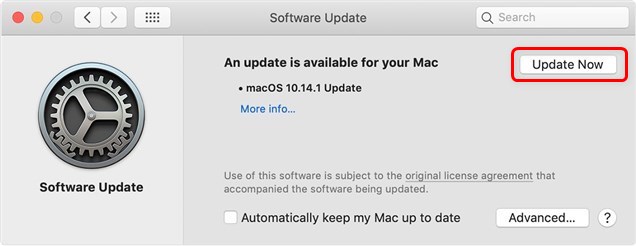
Update macOS to Fix Mac AirPlay Icon Missing
If you wish to install updates automatically, check the box next to “Keep my Mac up to date automatically.”
3. Enabling the AirPlay Icon on Mac
Please note that the AirPlay icon appears in the menu bar only when AirPlay mirroring devices are available. If the AirPlay icon disappears on your Mac, follow these steps:
Step 1. Go to “System Preferences” > “Displays.”
Step 2. At the bottom of the screen, check the box labeled “Show mirroring options in the menu bar when available.”

Set to Show Mirroring Options in Menu Bar
4. Enabling AirPlay in the Menu Bar
If you can’t see the AirPlay icon, it might have been manually turned off. Here is how to add AirPlay to the menu bar:
Step 1. Click on the Apple icon located at the top of the menu bar.
Step 2. Navigate to “System Preferences” select “Dock & Menu Bar.” and choose “Screen Mirroring”.
Step 3. Click on “Show in Menu Bar.”
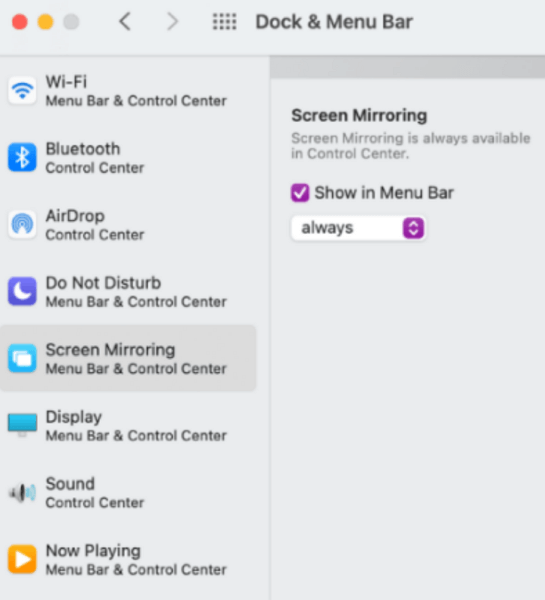
Enable AirPlay in Mac Menu Bar
5. Ensure Using Compatible AirPlay Devices
Not all Apple devices are capable of supporting AirPlay, and older versions of Apple devices might not have AirPlay functionality.
macOS devices introduced from 2018 onwards are enabled with AirPlay 2 capabilities, including MacBook Pro, MacBook Air, iMac, Mac Pro, iMac Pro, and Mac mini. Compatibility with AirPlay requires an iPhone running iOS 15 or a higher version.
For Apple TV, all models except for the first-generation Apple TV are compatible with AirPlay.
6. Check Firewall Settings
You can adjust your firewall settings to enable access to AirPlay on Apple devices.
Step 1. Access the Apple menu and select “System Preferences.”
Step 2. Click on “Security & Privacy,” then choose “Firewall” and “Firewall Options.”
Step 3. Check the option “Automatically allow built-in software to receive incoming connections.”
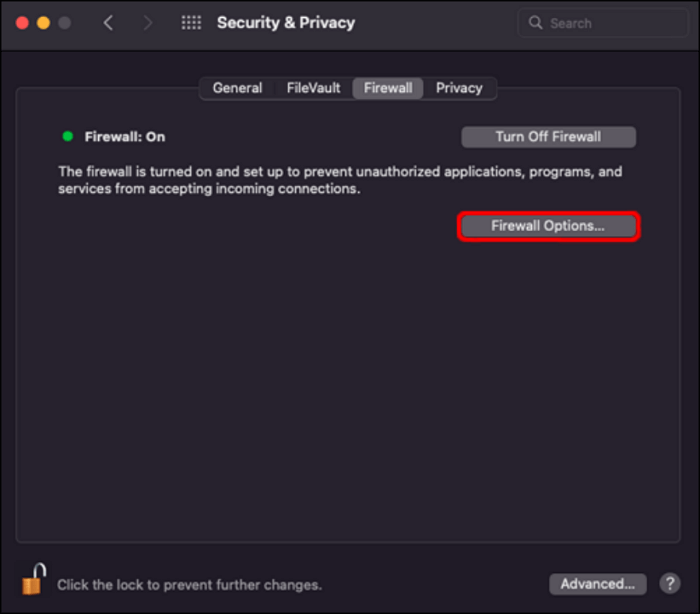
Check Firewall Options
How to Fix AirPlay Icon Not Showing on iPhone/iPad
The methods mentioned above are for resolving the AirPlay icon not showing on MacBook. However, there are instances where the AirPlay icon might also disappear on iPhones or iPads. Below are some common solutions:
1. Turn on WiFi
AirPlay is exclusively designed for Wi-Fi and doesn’t work over cellular networks, so it’s necessary to be connected to Wi-Fi. To enable Wi-Fi on your iOS device, navigate to “Settings” > “Wi-Fi,” and then tap the toggle switch.
2. Enabling AirPlay on iPhone/iPad
Step 1. Open the “Settings” on your iPhone or iPad.
Step 2. Tap on “General.” Look for “AirPlay & Handoff” and select it.
Step 3. Click on “Automatically AirPlay to TVs,” then choose “Automatic”.
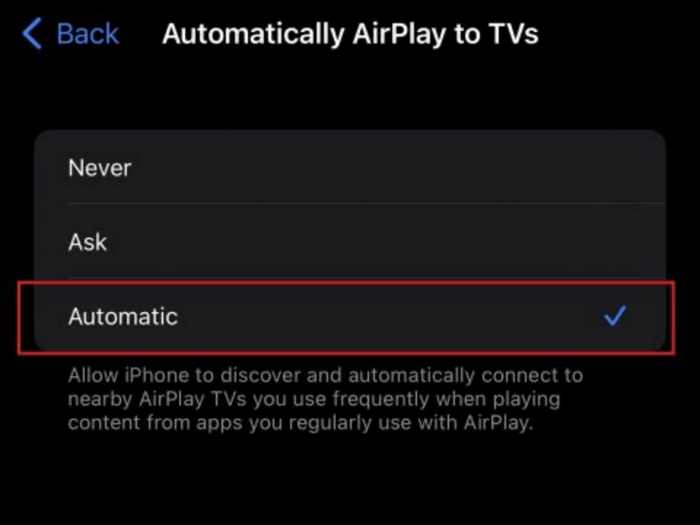
Enabling AirPlay on iPhone/iPad
3. Update Software
Make sure your iPhone or iPad is running the latest version of iOS.
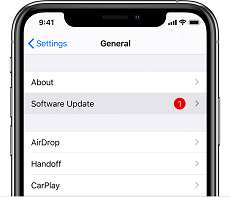
Software Updates on iPhone
Pros and Cons of Using AirPlay as a Screen Mirroring Tool
AirPlay also brings both benefits and limitations to the table. Let’s delve into the advantages and disadvantages of using AirPlay for this purpose.
Pros:
- Wireless Convenience
AirPlay eliminates the need for cables, making it convenient to share content from your device to a larger screen effortlessly. - Multi-Device Compatibility
It’s not limited to mirroring iPhones or iPads – you can also use AirPlay to mirror Macs onto compatible devices.
Cons:
- Limited to Apple Ecosystem
AirPlay is restricted to Apple devices and compatible receivers, limiting its usability for users with mixed technology environments. - Network Dependency
Both devices need to be on the same Wi-Fi network, which might lead to connectivity issues in crowded or unstable networks. - Degradation of Quality
When using AirPlay for screen mirroring, it’s not guaranteed to maintain the original definition quality. - Functionality Restrictions
In certain cases, AirPlay might not mirror the background music of certain games or applications.
Best AirPlay Alternative: Screen Mirror iPhone/Android to Mac with AnyMiro
In practical scenarios, AirPlay does come with its limitations. When the AirPlay icon not showing on your Mac, it can be quite troublesome.
Therefore, we recommend using a third-party screen mirroring app on your Mac – AnyMiro. It supports both iOS and Android devices. The process is straightforward and requires either a USB cable or a Wi-Fi connection. Unlike AirPlay, if you’re dealing with unstable Wi-Fi, you can rely on AnyMiro and use a USB cable for a quick solution.
AnyMiro offers up to 4K resolution for high-quality mirroring. It also ensures high stability, allowing for over 10 hours of continuous mirroring without issues. As a result, it’s an excellent alternative to AirPlay.
So how to use AnyMiro to mirror iPhone or Android screen to a MacBook:
Step 1. Before you begin, download AnyMiro on your MacBook.
Free Download for all windows & 100% safe Free Download for all mac & 100% safe
Free Download100% Clean & Safe
Step 2. After launching AnyMiro, you’ll see the main interface with options to select iOS or Android devices.

Mirror iPhone to Computer
Step 3. Next, click on “USB” mode. Connect your iOS device to your computer using a USB cable.
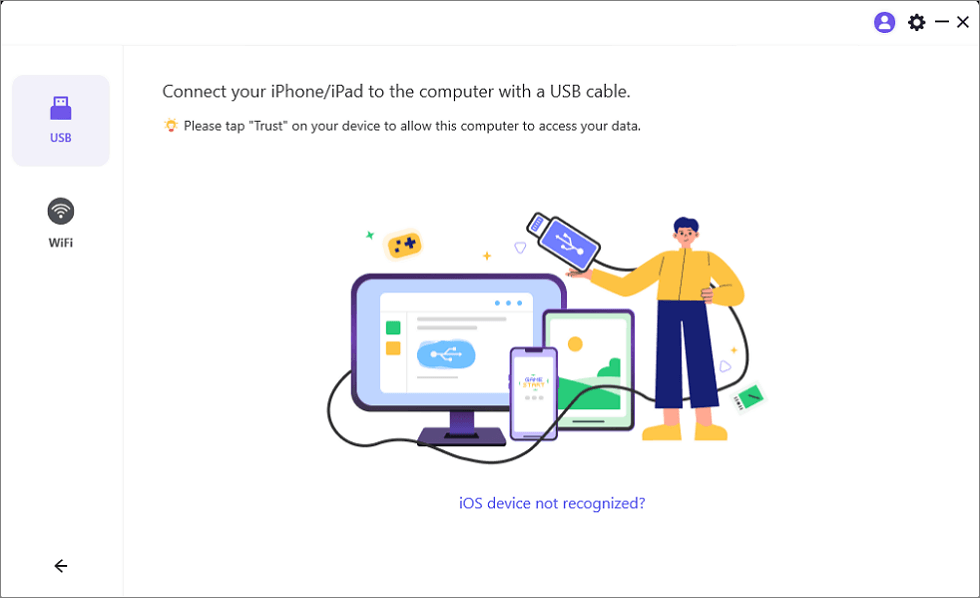
Mirror iOS Device to Computer via USB
Step 4. When prompted, click “Trust” this device on iPhone or iPad.
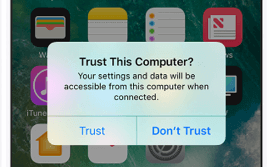
Trust Your Computer on iPhone
Step 5. Finally, you’ll be successfully connected and mirror your iOS device to Mac.
FAQs About AirPlay on Mac
1. Why is the sound not working on AirPlay?
The sound might not be working on AirPlay due to incorrect audio settings, network issues, device compatibility problems, or software updates.
2. How to mirror iPhone to Mac without WiFi?
We still recommend using AnyMiro, which supports screen mirroring via USB data cable for high stability.
3. Why can’t I screen share on FaceTime?
You might be unable to screen share on FaceTime due to device incompatibility or mismatched software versions. Additionally, network issues could also result in the inability to screen share.
The Bottom Line
That’s all the content of the AirPlay icon not showing on MacBook. For a better experience, we recommend using AnyMiro as a replacement for AirPlay when it comes to screen mirroring. It ensures higher stability and superior image quality with no color deviations. Furthermore, AnyMiro allows simultaneous transmission of background audio. So, go ahead and download it to experience these benefits firsthand.
AnyMiro – Real-Time Screen Mirroring Tool
Free download AnyMiro to enjoy a fast, stable, and smooth screen mirroring experience. You can mirror for better game playing, video watching, or live streaming mobile phone content.
Product-related questions? Contact Our Support Team to Get Quick Solution >

